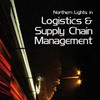 It’s Sunday and time for some weekend reflections, aka browsing the Internet for blogs and websites to indulge in and this is what I found: “In a world where almost every company relies on global supply chains and an international network of outsourced activities, a freak event many thousands of miles away can have a potentially devastating impact on business at home”. These are the opening words of a recent article in the Wall Street Journal, an article that paints 2010 as the year of the catastrophe, and the insurance company Swiss Re estimates that worldwide economic losses from natural catastrophes and man-made disasters reached $222 billion last year – more than triple the losses in 2009. This clearly underlines how critical it is that companies have a firm strategy in place to deal with the unexpected. As I discovered when digging into this article, the Wall Street Journal, not surprisingly, has a whole section devoted to corporate risk, and it is a section well worth studying.
It’s Sunday and time for some weekend reflections, aka browsing the Internet for blogs and websites to indulge in and this is what I found: “In a world where almost every company relies on global supply chains and an international network of outsourced activities, a freak event many thousands of miles away can have a potentially devastating impact on business at home”. These are the opening words of a recent article in the Wall Street Journal, an article that paints 2010 as the year of the catastrophe, and the insurance company Swiss Re estimates that worldwide economic losses from natural catastrophes and man-made disasters reached $222 billion last year – more than triple the losses in 2009. This clearly underlines how critical it is that companies have a firm strategy in place to deal with the unexpected. As I discovered when digging into this article, the Wall Street Journal, not surprisingly, has a whole section devoted to corporate risk, and it is a section well worth studying.
So much to read, so little time…
I became aware of the article on supply chain risk in the Wall Street Journal when I read Jim Fulcher’s blog post on Natural disasters, extreme weather and risk mitigation strategies in the Kinaxis Supply Chain Expert community, a community in which I participate, but which I have sadly neglected in the last couple of months, busy as I am with my own things. In his post, Jim uses the article to bring in his own point of view and to bring a sobering reminder of some the things that went wrong in 2010:
While natural disasters and extreme weather have always been business challenges, their potential becomes more significant as supply chains grow in complexity. More often than not, supply chains now reach around the world, and consequently, businesses are most likely dependent on suppliers and partners located thousands of miles away. The problem is that these distances introduce a higher degree of risk. Consider, for instance, that automotive manufacturer Nissan Motor was forced to shut down three auto assembly lines in Japan because the factories ran out of tire-pressure sensors when a plane carrying a shipment from a supplier in Ireland was grounded due to the cloud of volcanic ash covering Europe after the volcanic eruption in Iceland.
Interestingly, Jim cites some recent research by Vinod Singhal, who found that companies experiencing a supply chain disruption suffer a decline in stock prices that ranges between a 33 percent and 40 percent decline compared with industry peers mover the last three years. Mind you, in a 2003 article on The impact of supply chain glitches on shareholder value, he found that the decline after a glitch was some 11% on average during 1989-2000, so it’s a bit confounding to see that it now is so much more. Does this mean that supply chain disasters have gotten worse in the last 10 years, or is it that the impact has gotten worse now that supply chains are far more globalized than 10 years ago, or is it simply that the shareholders’ trust in the company is more easily shaken now than before?
Corporate Risk – as seen by the Wall Street Journal
Back to the section on Corporate Risk in the wall Street Journal. Not everything is supply chain risk related, but it is certainly worth reading. Owning a vineyard is perhaps a dream that many have, but it is a dream that is wrought with perils. Looking at risk of another kind, there is a thoughtful piece on why successful businessmen continue to make the seemingly financially insane decision to buy struggling sports clubs. Yes, why do they? Another article in the section looks at how some companies have recognized the matter of brand value and how important reputation is in the face of crisis. Finally, there’s a look at what may look like just an expensive hobby on the outside, but what is actually passion investments in fine art or fine goods. Not only can they be an inflation hedge, but they can also diversify exposure away from the movements in traditional fixed income and equities.
And that’s basically what I have been up to this Sunday. What have you been reading today?
Links
- community.kinaxis.com: Jim Fulcher’s Blog
- wsj.com: Corporate Risk
Related posts
- husdal.com: The impact of disasters on supply chains
- husdal.com: The impact of supply chain glitches on shareholder value












